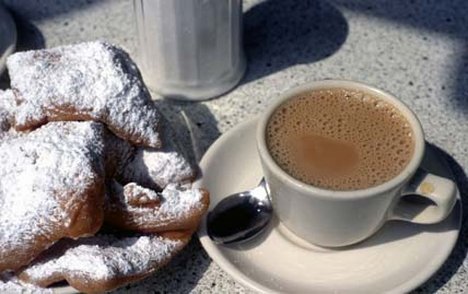PENTECOST
What exactly is that? Why do we wear red? Why do we read the Gospel in different languages? What's this about "the birthday of the church"? I put together some info. to help answer these questions ~ Caroline
What is Pentecost?
June 8th marks "the Fiftieth day" of Easter and is a prominent feast in the calendar of ancient Israel celebrating the giving of the Law on Sinai, and also later in the Christian liturgical year commemorating the descent of the Holy Spirit upon the twelve Apostles of Christ. In the Eastern churches, Pentecost can also refer to the fifty days between Easter and Pentecost, hence the book containing the liturgical texts for Paschaltide is called the Pentecostarion. The feast is also called Whit Sunday, Whitsun, or Whit, especially in England, where the following Monday was traditionally a holiday. Pentecost is celebrated seven weeks (50 days) after Easter Sunday, hence its name. Pentecost falls on the tenth day after Ascension Thursday.
Source: http://aibtv.com/interfaithcalendar/p-ups/may/pentecost.htm
What happened that day?
Ten days after Jesus ascended into heaven, the twelve apostles, Jesus’ mother and family, and many other of His disciples gathered together in Jerusalem for the Jewish harvest festival that was celebrated on the fiftieth day after Passover. While they were indoors praying, a sound like that of a rushing wind filled the house and tongues of fire descended and rested over each of their heads. This was the outpouring of the Holy Spirit on human flesh promised by God through the prophet Joel (Joel 2:28-29). The disciples were suddenly empowered to proclaim the gospel of the risen Christ. They went out into the streets of Jerusalem and began preaching to the crowds gathered for the festival. Not only did the disciples preach with boldness and vigor, but by a miracle of the Holy Spirit they spoke in the native languages of the people present, many who had come from all corners of the Roman Empire. This created a sensation. The apostle Peter seized the moment and addressed the crowd, preaching to them about Jesus’ death and resurrection for the forgiveness of sins. The result was that about three thousand converts were baptized that day. (http://www.faithinterface.com.au/christian-theology/pentecost-sunday-whit-sunday)
Among Christians, Pentecost commemorates the descent of the Holy Spirit upon the Twelve apostles and other followers of Jesus as described in the Acts of the Apostles. For this reason, Pentecost is sometimes described as the "Birthday of the Church."
(by Rev. Jay Sidebotham)
The Pentecostal movement of Christianity also derives its name from the New Testament event.
We wear red because it is the color of fire and blood. Red is liturgically used for Palm Sunday and Pentecost and reminds us of the tongues of fire as the Holy Spirit descended.
(The picture above is an icon of the Christian Pentecost, in the Greek Orthodox tradition. This is the Icon of the Descent of the Holy Spirit on the Apostles. At the bottom is an allegorical figure, called Kosmos, which symbolizes the world.)
We read in different languages because the idea is: Many languages, one prayer! It is because of this passage from Acts 2:1-4 "When the day of Pentecost had come, the disciples were all together in one place. And suddenly from heaven there came a sound like the rush of a violent wind, and it filled the entire house where they were sitting. Divided tongues, as of fire, appeared among them, and a tongue rested on each of them. All of them were filled with the Holy Spirit and began to speak in other languages, as the Spirit gave them ability." Some congregations choose to read The Lord's Prayer in many languages and some read the Gospel. If you ever have the opportunity while traveling to say The Lord's Prayer simultaneously with others speaking several languages, it is very striking and can be quite an emotional experience!
Various symbols of Pentecost include flames, wind, doves, and the breath of God and the Holy Spirit.
Other traditions included scattering rose petals from the ceiling of the churches (Italy), blow trumpets to represent the mighty wind (France), and Morris Dancing & cheese rolling (England). (http://en.m.wikipedia.org/wiki/Morris_dancing) In at least 22 nations, Pentecost Monday is a public holiday.




No comments:
Post a Comment